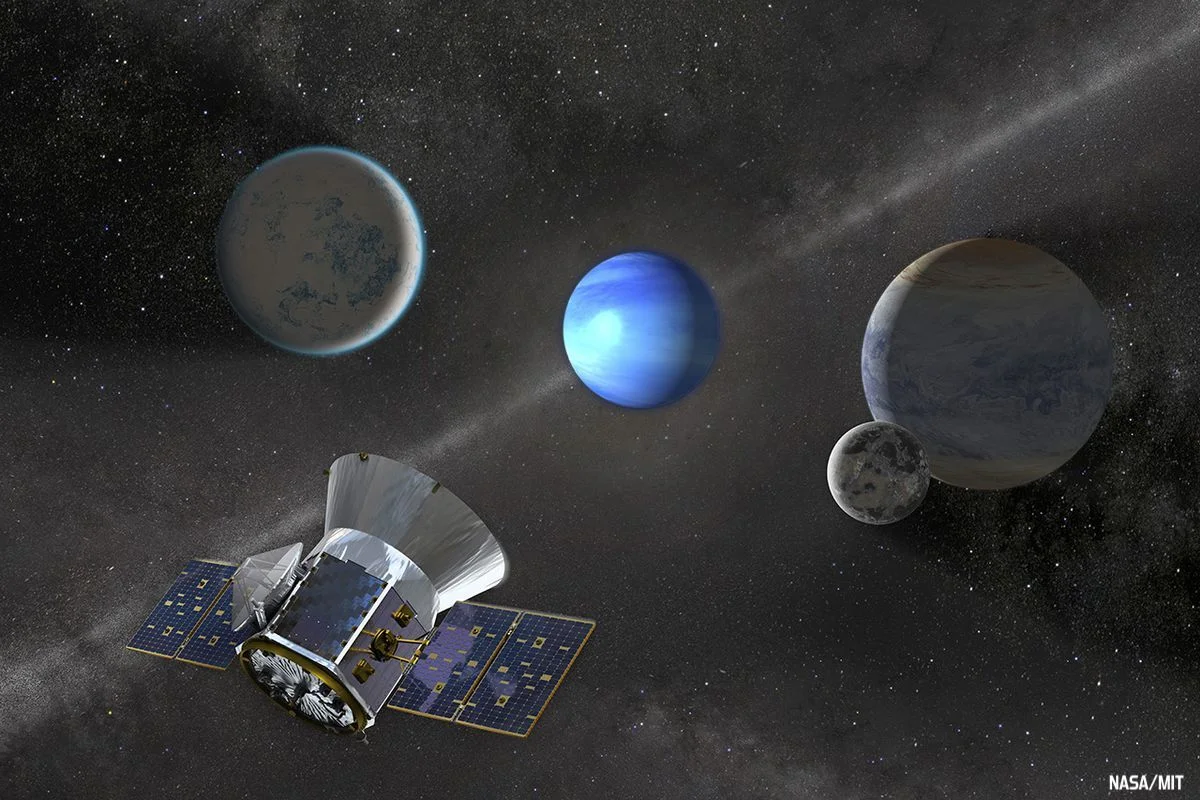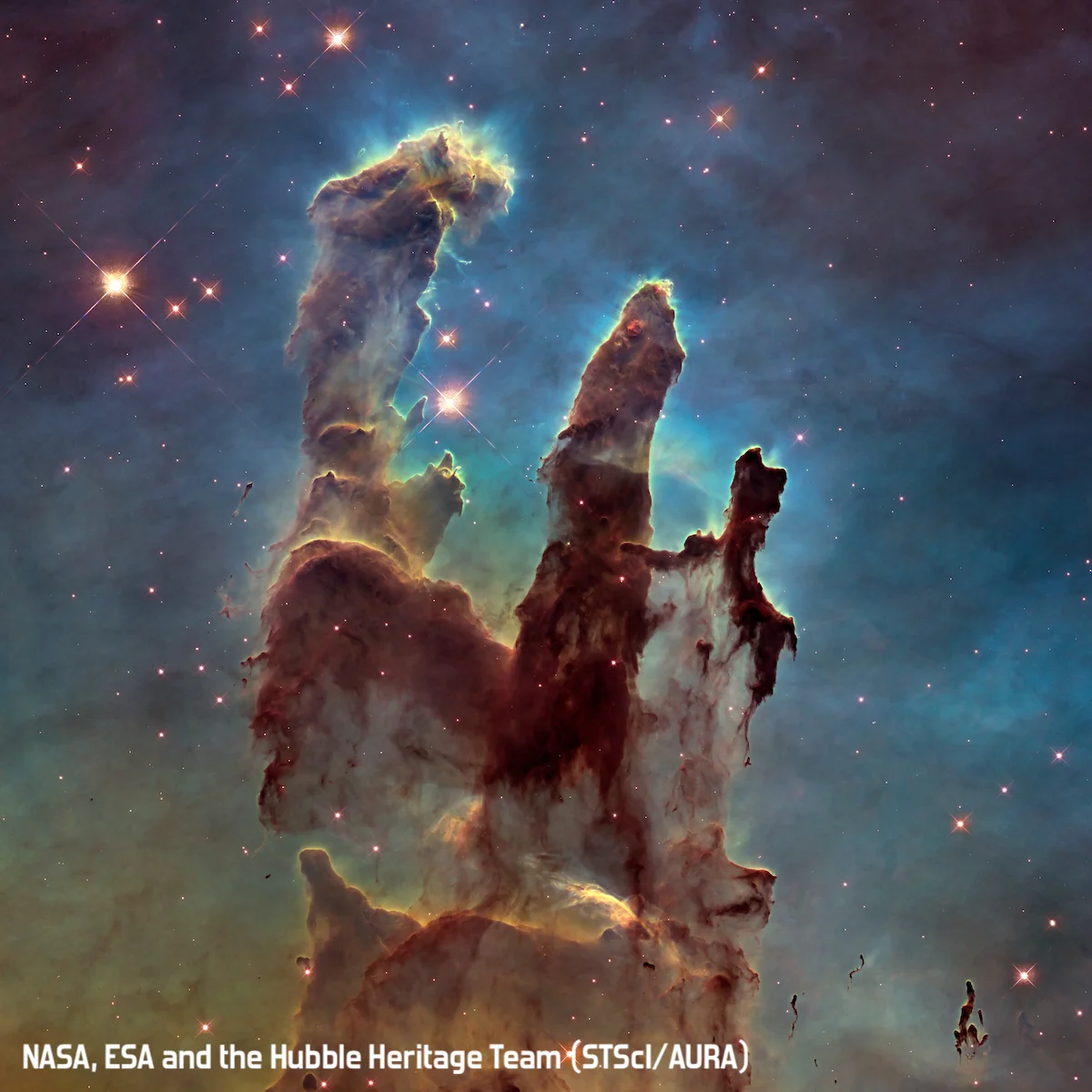
32: A Mysterious Box of Asteroid Stuff
Right now, the Japanese space agency JAXA has a spacecraft, Hayabusa2, in orbit around a near-earth asteroid called Ryugu — and they're doing some crazy stuff up there.
First, they're shooting it with pellets and hoovering up the blasted surface fragments. Then they're going to fire a larger projectile to make a crater a few metres across, to get samples from deeper within the asteroid. They've even got cute little rovers beetling around on the rocky surface taking pictures and making maps.
And once it's done with taking pics and collecting bits of asteroid grit, Hayabusa2 will rocket back to earth and crash a small box containing the samples into the Australian outback for scientists to collect and analyse.

31: LIGO Gets An Upgrade
If space-time can curve, then it can also wiggle. Spotting those wiggles, turns out, is really hard.
A hundred years ago or so, Einstein published his General Theory of Relativity which said that space and time aren’t just the background arena for stuff in the universe to do things in — space-time *is* the stuff of the universe. It curves and interacts with matter and energy. As the great physicist J.A. Wheeler put it, “Matter tells spacetime how to curve. Spacetime tells matter how to move.”
Along with all the other mind-bending predictions of General Relativity came one elegant prediction: space-time can wiggle. Energetic events in the universe should create gravitational waves that propagate outwards across the cosmos, similar to the way electromagnetic waves (or, as call them, ‘light’) are emitted by accelerating electrons.
The prediction was easy, but a quick calculation showed a bit of a problem with detection. These gravitational waves are tiny. Like, really small. Brain-breakingly weak. So weak, it took a hundred years to catch one moving through a pair of insanely sensitive detectors called LIGO.

30: Stardust, or Cosmic Poo?
Happy International Year of the Periodic Table, everyone! We’re celebrating 150 years since Mendeleev brought some order to the unruly mess of the elements of matter, organising all of the types of atoms into a system sorted by physics and chemistry: rows of increasing number of protons in the nucleus; columns of similar chemical properties due to the orbiting electrons. This week, Emily takes us through the Astronomer’s version of the table, which really only has three bits to it: Hydrogen, which is almost everything; Helium, which is almost everything else; and the rest, which is just called “metals”.

29: The Serendipitous Rings of Saturn
Saturn. There's no denying, it's gorgeous. And for 13 years the Cassini-Huygens spacecraft, a joint mission by NASA, the ESA and the ASI, orbited the ringed planet, sending back stunning images of the rings, the many moons and moonlets, and the planet surface, as well as copious data that has changed astronomers understanding of Saturn and its system. Some of that data, released recently, shows that those iconic rings aren't as massive as once thought — which also implies they're not terribly old either, and could disappear in a few hundred million years. On a cosmic time scale, blink and you miss them! We're lucky to be here to witness Saturn's magnificence.

28: All Exoplanets Are Exciting
We're back for 2019! Welcome to another year of awesome astronomy. In this episode we chat about the Super Wolf Blood Moon (a.k.a. "January-lunar-eclipse-that-was-slightly-bigger-than-average") and the lunar meteorite impacts caught on video during the eclipse. Then Emily gets pretty excited about the First Light data from TESS, everyone's favourite exoplanet-hunting spacecraft — and describes the first three exoplanets found amongst the TESS data. Turns out, all exoplanets are indeed exciting.

27: Up A Mountain In NZ
Emily went back to New Zealand for Christmas. Chris is in Yorkshire. One of them is surrounded by summer sunshine and Middle-Earth mountains. One of them ... isn't. Emily reports from the final day of her observing run on what it's like being an actual, real-life astronomer, before descending from the peak to enjoy the silly season in the antipodes. Whatever your flavour of December celebrations, we at Syzygy wish you a happy one — and a great start to 2019, another year full of astronomical awesomeness.

26: How To Build A Solar System
The Earth and the Sun and all the other planets feel like familiar friends who've been around forever. Wind the clock back a few billion years though, and things were very different. The infant Sun was prone to highly energetic tantrums, the gas giants were acting like thugs and throwing their weight around, and the rocky planets were just trying to gather enough dust and ice in one place to actually stay in one piece. It's not clear at all how we got from such a chaotic, violent early solar system to the relatively tranquil place we call home today. Fortunately, Emily's here with the latest models and theories to clear it all up for us.

25: Picture The Sky
Ever since early humans gazed in wonder at the majesty of the night sky, astronomy has been a particularly visual science. Modern astronomers deal in vast quantities of data, measuring the cosmos with visible light and invisible neutrinos, x-rays and cosmic rays, radio waves and gravity waves. Yet its the glorious images of astronomy — the planets, nebulae and galaxies — that capture our minds and fuels our imaginations. In this episode we discuss what makes astrophotography so important, and Emily lists her Top 4 mind-blowing cosmic images.

24: Black Holes Feeding On Colliding Galaxies
There are a lot of galaxies in the universe — billions and billions of them, in fact. And many of them are in the process of collision: some collided long ago, some are merging right now, and some will slam together in the distant future. When they collide, the supermassive black holes in their cores can collide and merge too — and that's a pretty extreme event. Studying how fast these mergers take place is changing astronomers’ models of galaxy formation and evolution.

23: Syzygy Live! from YorNight 2018
A very special live event from YorNight 2018, the University of York's celebration of research at beautiful King's Manor. We talked about exoplanets — that is, planets around other stars — and Emily shared her top three exoplanets of all time. Chris finished by strapping on a guitar and going all Chris Hadfield with The Exoplanet Song. A wonderful, enthusiastic audience of young and old (many in astro-themed fancy dress for the occasion!) packed out the theatre, asked brilliant questions and cheered along.
